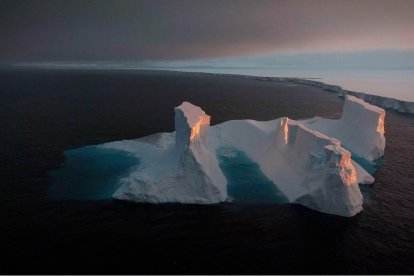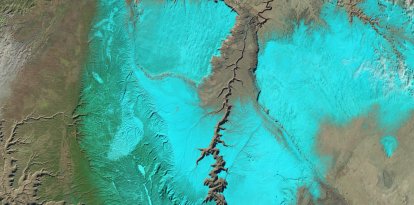What is known about the Ran submarine, which mysteriously disappeared in the Antarctic after finding strange structures
It is a submarine owned by the University of Gothenburg in Sweden and was one of three unmanned vehicles worldwide, used for close-up research of Antarctic melting.

Antarctica
Mystery remains in Antarctica. In early 2024, a submarine called Ran vanished off the Dotson Shelf after the discovery of a series of unknown structures in the ice beneath the Antarctic Ocean.
It is a submarine owned by the University of Gothenburg in Sweden and was one of three unmanned vehicles worldwide used for close-up research of Antarctic melting.
In 2019, it became the first to go deep into the Thwaites Glacier, located in Antarctica and known as the "glacier at the end of the world."
Then, in January 2024, it made its final dive, reaching 1,600 feet deep, but this time on the nearby Dotson Ice Shelf, which is part of the West Antarctic Ice Sheet and considered likely to have a significant impact on sea level rise in the future.
According to the university, Ran was an unmanned underwater vehicle equipped with modern technology and sensors that can measure and document the environment in the water. It had the capability to perform long missions under the ice.
"After a long journey under the ice, the AUV did not appear at the programmed rendezvous point. RV/IB Araon aborted the homeward journey and searches were conducted with acoustic search equipment, helicopters, and drones, without success. In the end it was just a matter of realizing that Ran had been lost," explained the University of Gothenburg in an article in which it detailed about the disappearance.
In that regard, Anna Wåhlin, who was leading the project, indicated that all that is known is that something unexpected happened under the ice.
Other successful dives
"The data we receive from Ran is unique in the world, and of great value for international research. At the same time, the stakes are high, we knew something like this could happen, even that it's a likely end for Ran. Personally, I'm of the opinion that this is a better end than having the AUV aging gathering dust in a garage. At the same time, it is of course a very big loss. We have had Ran for five years now, and during those five years we have carried out about ten expeditions, training, development work and tests," Wåhlin highlighted.
Ran fulfilled its main objective by being one of the few submersibles to succeed in capturing images of the hidden face of Antarctica. The last photos it took showed a complex subglacial landscape, made up of sand dune-like structures that were never before observed.
"To top it off, the study also found that the Dotson Ice Shelf melts faster in areas where underwater currents erode its base. So, while the participants lament the loss of the submersible they had been working with for about 5 years, they celebrate that Ran could not have had a better ending," reported National Geographic.
Meanwhile, Anna Wåhlin asserted that her team's intention is to create Ran's replacement.
"Our aim is to replace Ran. We will be looking for a financier to cover the deductions made by the insurance company and the price increase that has occurred over the years," says Anna Wåhlin.
RECOMMENDATION






















